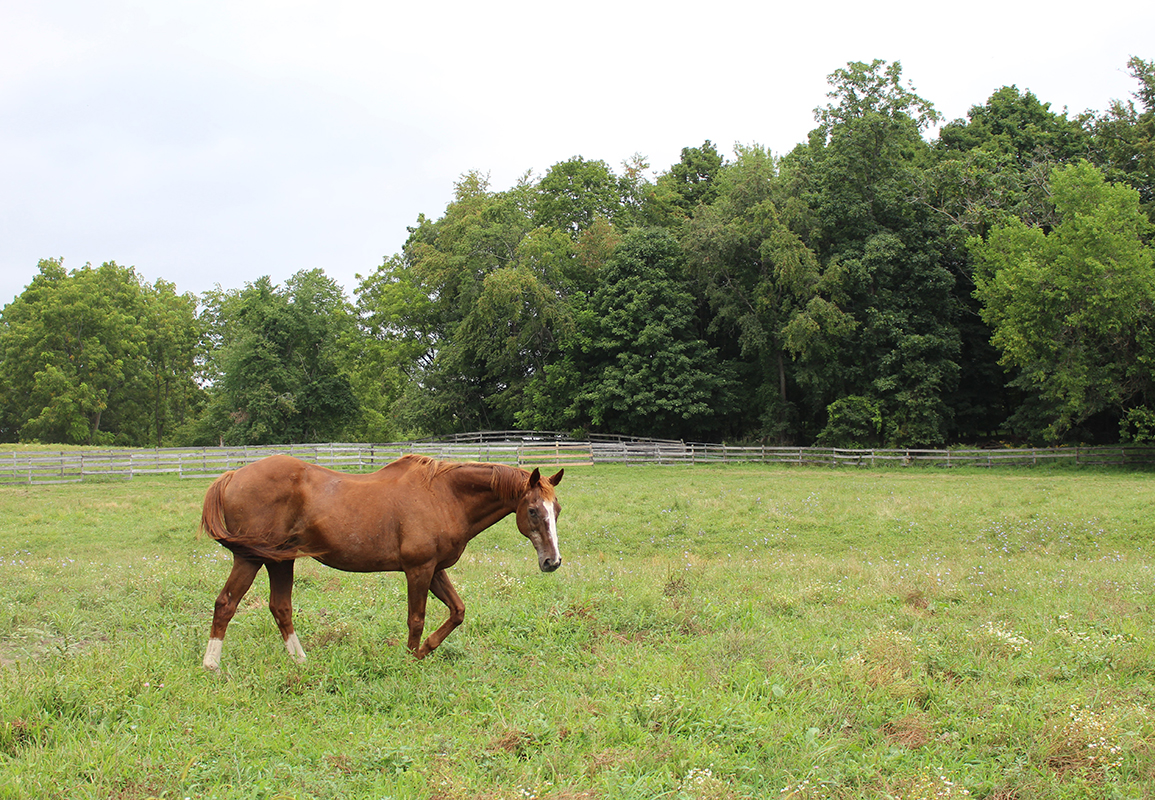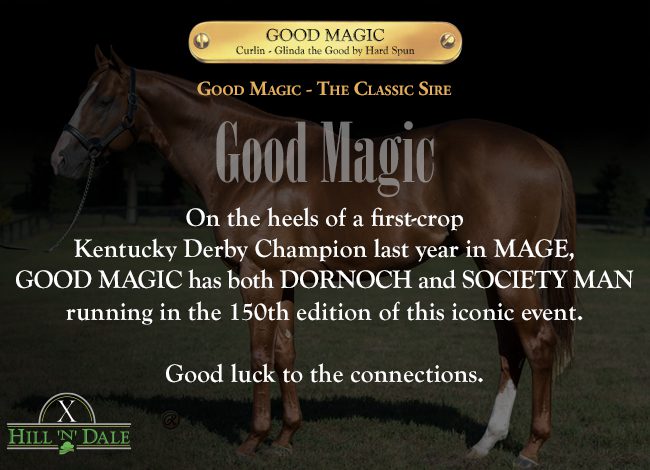By Bill Finley
GARDINER, NY-A 30-year-old gelding you surely never heard of who never did anything that special on the racetrack is scheduled to be put down Friday at his home, the Thoroughbred Retirement Foundation farm at the Wallkill Correctional Facility in upstate New York. It happens. They all get old and, for Renaissance Bob, it is his time.
This is not pressing news. Far from it. But it will be a sad, bittersweet day for me. I saved Renaissance Bob's life, plucking him out of a kill pen on Nov. 23, 1998 at the notorious New Holland, Pennsylvania sales. I did so as part of an investigative series I did for my employer at the time, the New York Daily News, that looked at how a race horse can get caught up in the slaughter pipeline.
If not for me, Bob would have died a grisly death in a slaughterhouse more than 22 years ago. Instead, he lived out his life happily and peacefully at Wallkill and other TRF farms.
But I am not here to take a bow. I didn't necessarily enter into this as a do-gooder. I was more interested in creating a compelling story that would shed light on what, back then, was an issue the racing industry very much swept under the rug. To make the piece work, I needed to tell the life story of a horse, from cradle to near grave. I could only do that if I identified a thoroughbred and got him out of New Holland and to safety.
Standing in the kill pen, literally surrounded by dozens of horses, I didn't pick out Renaissance Bob because he had a twinkle in his eye or I was enamored by his coppery coat or his friendly nature. Rather, I had identified him as a thoroughbred and he never veered too far away from me. Had he been standing on the other side of the pen, he would have been dead a long time ago. I could only save one horse.
So, yes, I did something for what was then a seven-year-old infirm gelding who was last seen running in a $5,000 claimer at Penn National and I was pretty sure that I had a good story. But I got a lot more out of this than I ever anticipated. It turns out I wasn't so good after all at playing the role of the unsentimental journalist who wouldn't allow themselves to get personally involved in a story. Even though he was sent to the TRF, I thought of Renaissance Bob as mine. While he was living at a farm near my house in New Jersey, I would visit him often. I introduced my children, then infants, now grownups, to him. I fed him carrots.
Here's what he had done for me: allowed me to feel good about myself. That's the sort of thing we all need.
About two weeks ago, someone at the TRF reached out to me to tell me that Renaissance Bob was scheduled to be put down. He's old and has lost most of his teeth, so they don't think it would be fair to him to ask him to get through the upcoming winter. I wanted to say goodbye and on Tuesday headed up to Wallkill to see him one last time. It didn't go so well. He had become set in his ways over the years and preferred to be left alone to roam around his paddock as he pleased. I didn't get the picture or get to pet him or even get close enough to say goodbye. It's ok. He's has earned the right to be a little cranky.
Renaissance Bob, a son of Cannon Shell, was born May 26, 1991 at Highcliff Farm in Delanson, New York and was bred by Seymour Cohn. He sold for $2,700 at OBS as a weanling before being bought by owner Bob Greenhut at the 1992 Fasig-Tipton New York bred sale in Saratoga. Greenhut gave him to trainer John DeStefano and Renaissance Bob made his debut April 5, 1994 at Aqueduct in a $35,000 maiden claimer. He finished eighth that day, but, three starts later, won a maiden special weight race at Belmont for New York breds. The highlight of his career came that August when he won a New York-bred allowance at Saratoga. Covering the meet for the Daily News, I am sure I was there that day, but have no memory of ever seeing the horse run.
That didn't make him a star and what so often happens to horses like Renaissance Bob is that their form goes bad because they are dealing with physical issues. His descent was all too typical. Bob struggled for DeStefano and after he lost a $15,000 claimer by 12 1/4 lengths he was sold to owner Chris Potash and sent to Laurel. It wasn't long before he couldn't make it at Laurel. The next stop was Finger Lakes and then Penn National, where, through the claiming box, he bounced around from trainer to trainer.
He made his last career start on Dec. 13, 1996 for trainer Richard Wasserman, but he was not yet done. Bob's joints were deteriorating and his recent form was terrible, but Wasserman was able to find a buyer. He sold the horse for $1,500 to trainer Gina Kreiser, who spent nearly two years trying to get him sound enough to race. Kreiser, who has not started a horse since 2011, decided to cut her losses, selling Bob for $340 to a “killer buyer” named Charles DeHart. Beaten up by his 52 career starts, he was not sound enough to be adopted out as a riding horse.
“A lot of people would have sent him to the killers a lot sooner than I did,” Kreiser told me at the time. “Rick Wasserman kept saying to me, 'Why don't you get rid of that horse?' A couple of people were interested in him as a riding horse, but it didn't work out. Sure, I felt bad about this, but it comes down to whether or not a horse can pay for himself and, if he can't, he has no use to a lot of people. I needed him gone.”
Renaissance Bob was bought at the New Holland auction for $500 by Arlow Kiehl. He told me that the plan was to send Renaissance Bob and the other 37 horses he purchased at New Holland to a slaughterhouse in Ontario, which would pay him $540 for a horse of Bob's weight. I offered to give Kiehl $550 to take Bob off of his hands, and the horse was mine.
So much has changed since then, and for the better.
I made a return trip to New Holland in 2019 and found only one thoroughbred in the sale, and it was an old mare who hasn't raced in a decade.
Today, Kreiser's comments seem particularly cruel, and, though brutally honest, just the sort of thing no trainer would dare admit to. And admitting that she had sent a horse to New Holland would now have gotten her banned from Penn National and virtually every other track in the country. That threat has stopped the flow of horses from the tracks to the slaughterhouses.
Nor was the industry as a whole all that eager to help out financially. A plea to donate to the TRF ran with the New York Daily News story and hundreds of readers chipped in, with most of the contributions in the $1 to $5 neighborhood. There was only one donation from someone involved with the sport. Today, racing has come together to raise millions for aftercare and there are dozens of retirement groups working feverishly to find a home and a second career for every horse that comes off the track.
Bob was sent from a TRF facility in Virginia to Wallkill in 2006. Kelsey Kober took over as the Wallkill farm manager three years ago and, along with the inmates who make up her staff, has overseen Bob's care. Bob was assigned to what she calls the “old-timers' paddock,” which includes only horses that are 25 or older.
“Bob is a little bit stubborn but when you get around him, he can be extremely friendly,” she said. “I will miss him.”
So will I.
Not a subscriber? Click here to sign up for the daily PDF or alerts.






